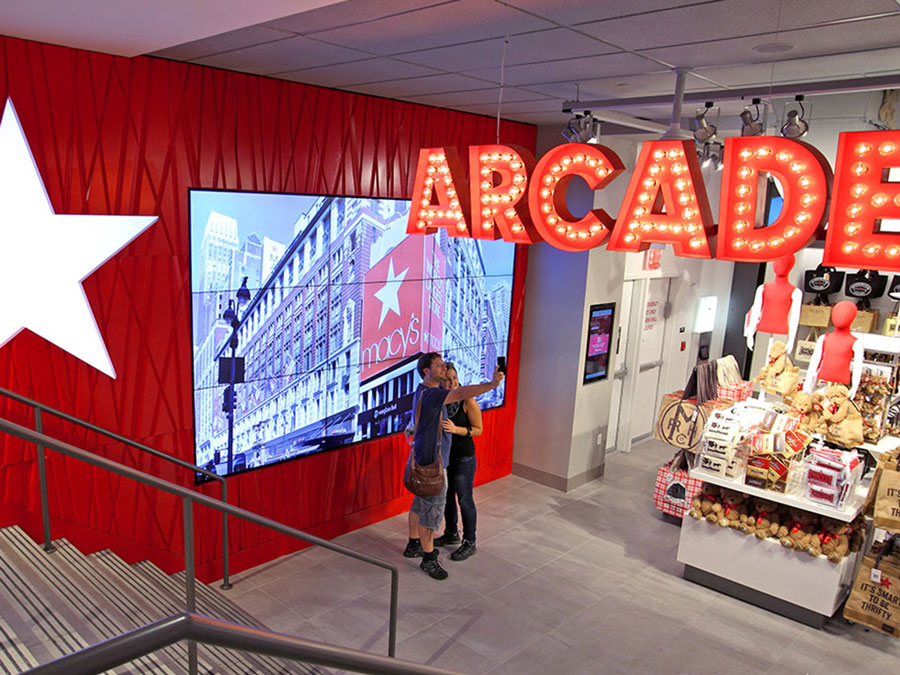4 Must-Haves for a High-Performing Digital Signage Network
You’ve invested the time and money into an extensive digital signage network. But is it working as well as it should? Is it accomplishing the goals you initially had for it? Do you even have any way of knowing?
With such a big investment, you want to make sure your network stays healthy and maintains a consistent ROI. Sure, you want to make sure it is sound from an infrastructure standpoint, but you need to define what healthy means in the context of a digital signage network. That’s true whether you’ve just brought the network online or it’s been in place for years. Then once you reach that plateau of health, you’ll want to fine-tune it – and that means knowing the steps to take to continually optimize its performance.
In an ideal world, of course, you’d have found this information and incorporated it in your initial network design at the beginning. But whether you’re just starting out or you’re looking to achieve even better results, it’s never too late to put a solid set of recommendations into action. The goal of this eBook is first to frame the “must haves” that signal your network is performing properly, then to show you how to ratchet its performance yet another notch.
1.0
For Starters, You Have to Measure Your Network’s Performance
If you aren’t measuring the effectiveness of your digital signage network, you won’t have a baseline against which to judge any future performance improvements. And no matter what the current state of your network there is always room for improvement.
Say you suspect your network isn’t healthy. Without data to support you, you might start looking for solutions without first knowing the underlying problem you’re trying to solve. Digital signage is extremely complex, both in its actual structure and in the number of departments it touches inside an organization. Often the network is owned by marketing, but team members from procurement, IT, and many others are involved in implementing and maintaining it. Yet it isn’t unusual for one group to travel a long way down the road to implementation with its own plans before ever consulting the other departments. When that happens, you end up with conflicting ideas of what the goals of the network are, and therefore differing opinions on how to measure its health and performance.
To avoid this, it’s important to have conversations about the data that you want to see from your network. And, yes, this will certainly entail more than one conversation. The kind of data you want to collect is going to affect everything from how the network is structured internally to the kind of content and how frequently you play it on your screens. Having these conversations up front and then regularly will keep data collection top of mind and these disparate departments plugged in.
Consulting other stakeholders, such as IT and store management teams, will also help you avoid issues down the line, like not being able to scale your network or not having the right tools you need to measure how it is performing against the goals you set for it.
2.0
Digital Signage Network Must Haves
Overall, measuring and analyzing your network performance data lets you shift the conversation from, “This is running fine” to “This is good, but how can we make it even better?” But before answering the second question, you need to know what it means to be “running fine.”
As a general rule, there are four hallmarks of a healthy digital signage network — that is, a network that is even capable of performing as you expect it to. Before you can begin to judge the effectiveness and performance of your network against your goals, these four aspects must be true. If not, you need to step back and ensure these basics are in place before trying to evaluate the basic effectiveness of the network, much less improve or optimize said performance.
The screens are working.
Issues are identified and resolved quickly.
Content is refreshed regularly.
A content strategy is in place and is followed.
3.0
Improving Performance
of a Healthy Network
Just as there are four must-haves for a healthy network, there are also four steps to evaluate and improve it.
Once the four prerequisites are in place, it’s time to evaluate the performance of your digital signage network toward the goals the organization set for it in the first place. Even more important, the following steps not only make that evaluation possible, they’ll let you turn a good-performing network into a high-performance one.
As you’ll see, the process starts with measuring performance data, but it doesn’t end there. You also have to do something with that data.
STEP 1: Measure
Ideally, your content and experiences should be designed so that they collect data and attribute results to interactions with that content. For instance, to measure if content is appealing, you’ll have included a way to measure if customers are looking at or interacting with it. In other words, you’ll have a way to measure the types and volumes of engagement with each interactive experience.
If your content engagement isn’t currently measured, consult with other teams in your organization for their guidance. Another division may already have a tool that can track the type of results you need. For example, the IT team may have ways to tap into your in-store Wi-Fi network to measure how many people are in a particular area of the store and for how long, a potential indicator they are seeing the content on nearby screens. You can then correlate that data with numbers from the point-of-sale data to determine whether the audience bought what was being promoted on those screens.
The team responsible for measuring customer satisfaction – usually the merchandising or store operations team – are another valuable resource. They can help you monitor customer satisfaction, whether through surveys, secret shoppers or any number of other methods.
In addition to other stakeholders inside your company, you can also tap your digital signage partner as a resource, leveraging their experience with other customers to help you figure out measurements you might want to consider and how to implement them.
STEP 2: Analyze
The next step is to use that data to identify those areas of your network strategy that may be underperforming and push those that are already effective to perform even better. At this stage it’s important that you take time in your analysis to understand the root causes for the results you’re seeing.
Root cause analysis is complex. It requires a broad understanding of the different component parts of your digital signage network—like the media players, software components, and screens. You should understand how all the hardware integrates, understand the connectivity, the server architecture, and understand the network that the server is operating on. In addition to the hardware and software, you need to understand content and content strategy as well as the goals of the audience. Even with a good understanding of the different components of the network, the complex correlation of actions to results make it difficult for most organizations to perform effective root cause analysis on their own. It’s often most effective to work with your digital signage partner to do this kind of work.
STEP 3: Plan
This is where you determine how you will address the root causes identified in the previous step. First, consult all stakeholders, as well as your digital signage partner, to make sure you’re not missing anything.
The important part of planning is that it needs to come after analyzing and identifying root causes. Take the time to understand why that data point exists the way it does. If you just look at raw data and you start taking action, you may be treating symptoms but not the underlying causes.
For example, the data may show the audience isn’t viewing the content on a particular screen, so you change the content – but the engagement numbers don’t improve. If you’d properly analyzed the issue, you may have discovered that the placement of the screen makes it hard to see – the root cause for why customers aren’t engaging with the content.
STEP 4: Execute
Now that you’ve got the data, analyzed it for root cause, and made a plan to address any performance roadblocks, it’s time to take action – simply execute according to the plan you developed with the proper stakeholder involvement.
So, did it work?
To know how effective your efforts were, you need to start again at Step 1. Remember that optimizing performance of your digital signage network isn’t a one-time-and-it’s-done effort. Keep monitoring your network, so you don’t miss out on opportunities to optimize it. Make measurement a key part of your quarterly network analysis. Involve IT, merchandising, marketing, corporate communications, and other affected stakeholders in conversations, as well as your digital signage partner.
As you have more conversations with stakeholders and look for more ways to measure data, you’ll get better results. And as you create new campaigns, you automatically look for ways to collect data from your content. Before you know it, you’ll have turned a basically healthy network into a high-performance marketing machine.
At Creative Realities, we’ve helped customers design and implement digital signage networks for nearly three decades. During that time, we’ve discovered a number of best practices that contribute to our customers’ success. Those discoveries allow us to help them identify the root causes that are keeping their networks from delivering the results they want and how to correct those issues. We can help you do that too.
Connect with us today, and let's create something extraordinary.

Share this
You May Also Like
These Related Stories

Principles for Creating Engaging Digital Signage Content

Choosing Digital Signage Content Types to Suit Your Needs

